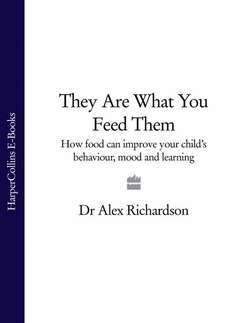Читать книгу They Are What You Feed Them: How Food Can Improve Your Child’s Behaviour, Mood and Learning - Dr Richardson Alex - Страница 44
Common Indicators of ASD
ОглавлениеAutism is now recognized as having varying degrees of severity, captured by the term ‘autistic spectrum disorders’.
Before the age of three, shows delays or regression (permanent loss of previously acquired abilities) in social interaction and language skills
May show repetitive movements of part or all of the body (rocking, tapping, head-banging or self-stimulation)
At any age, shows a lack of spontaneous, imaginative play appropriate to his age
Shows poor or limited ‘non-verbal’ behaviours, such as eye contact, facial and body expressions
Has difficulties making friends and reciprocating socially or emotionally (may not appear interested in showing or telling you things)
Has difficulties with speech and limited use of gestures (if language skills are developed, conversational skills are still poor)
Shows restricted patterns of behaviour, interests and activities (preference for repetition and familiarity, and behaviour may be ritualized)
May be preoccupied with certain objects or their parts (for example, often attracted by things that move or spin)
Alternative labels have been springing up in recent years. Some emphasize the more positive aspects of these conditions, and tend to cross-cut the conventional diagnostic labels. The Highly Sensitive Child (HSC) is a good example, and in her popular book of the same name, Elaine Aaron does an excellent job of capturing many of the qualities that these children show.10
Your child may be in august company: Einstein appears to have exemplified the ‘absent-minded professor’ syndrome. He was dismissed at school as a daydreamer with little or no potential, and he was also sacked from two teaching jobs for his poor spelling—consistent with dyslexic/dyspraxic traits. More recently, he has also been claimed for the autistic genius camp for his supposed obsessiveness and lack of social skills!
